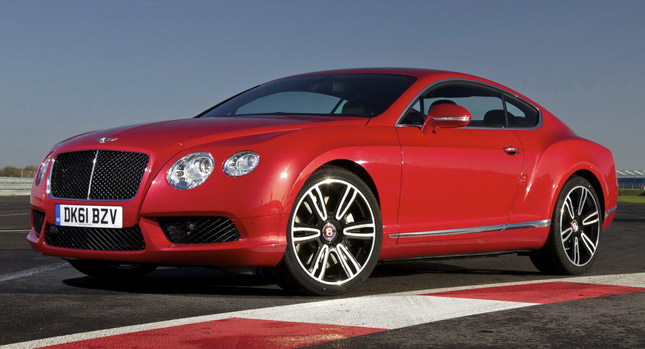The V8 versions of the Bentley Continental GT coupe and GTC convertible were unveiled almost a month before its Detroit Motor Show debut. Even though for decades Bentleys sported a turbocharged V8 under their hood, the Continental does not employ the 6.75-liter unit that powers the current Mulsanne, but a brand-new 4.0-liter unit.
Despite slotting below the W12 version, the V8’s 500HP and 660Nm (487 lb-ft) ensure that it does service to the red badge that denotes the sportier Bentleys delivering a 0-100 km/h (0-62 mph) time of under 5.0 seconds and a top speed exceeding 290 km/h (180 mph).
“The new V8 engine gives Bentley a three-engine line-up for the first time since the early days of the company and we’re confident it will characterize the Bentley driving experience as the 6.75 V8 and 6.0 W12 do”, said Head of Chassis and Powertrain Engineering Brian Gush.
Since even brands like Bentley cannot escape the harsh realities of life, such as the demands for lower fuel consumption and CO2 emissions, the British company decided in 2008 that it needed to develop a smaller displacement engine for the Continental series.
The company wanted to improve the Conti’s efficiency by 40 percent. It was a very ambitious goal that could not be achieved solely by reducing the cylinder count and displacement without compromising the power and torque Bentley clients take for granted.
Gush admits that “hitting the efficiency targets we set ourselves was a tough challenge; but not only is the new 4.0 V8 a standard-setter for fuel consumption and CO2 emissions, it also rewards the keen driver exactly as a Bentley engine should.”
Despite sporting a similar capacity to the 1959 classic engine, the Mulsanne’s 6.75-liter V8 is in fact a newly developed unit featuring cylinder deactivation technology under light throttle. This feature found its way into the new V8 as well as during cruising or deceleration, it shuts down four cylinders and operates as a V4.
In order for the transition from V8 to V4 and vice-versa to go unnoticed, the V8 features switchable hydraulic engine mounts that compensate for the different engine resonance in the two operating modes, thus isolating the cabin from vibration.
An advanced engine management system with a 32-bit TriCore processor performing 180 million instructions per second controls the engine’s operation and transition from one mode to the other.
It also helps warm-up the engine, oil control system and transmission faster by controlling the engine’s thermal management system. This contributes to achieving the 40 percent reduction goal by minimizing losses due to extra friction caused by cold lubricant and bearings and engaging the cooling system when the right operating temperature is reached.
The clever design of the car’s electrical system reduced the amount of power lost to the alternator which is also “topped up” by the energy recovery system.
Last, but not least, in the catalogue of energy-saving features is the close-ratio eight-speed automatic gearbox. It accounts for 6 percent of the total fuel consumption reduction thanks to its higher number of gears that ensures the engine is always engaging the most efficient gearing.
PHOTO GALLERY









































